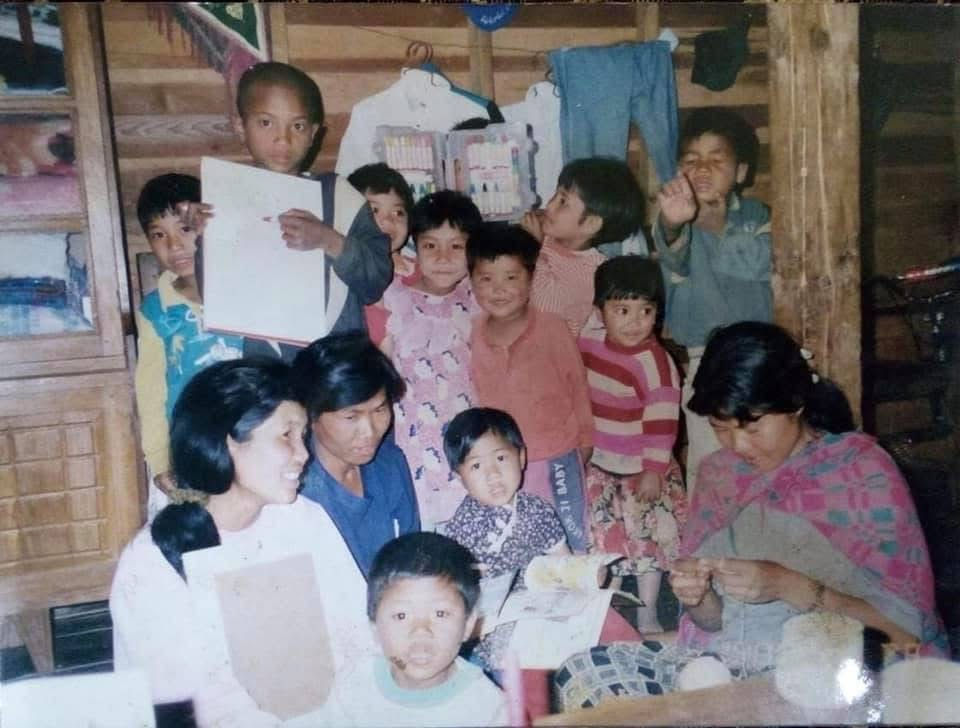Miracle of Milk
- Chloe Price

- Apr 15, 2022
- 5 min read
Updated: May 22, 2023
In 2020, there were 3,613,647 babies born in the United States. That’s 11 babies for every thousand people. Of these infants born, 8.24% have a low birth weight, which means they were born under 5 pounds, 8 ounces. Some babies with a low birth weight are still healthy, but many are at risk for health problems.1 Another 1 in 10 are born preterm, the pregnancy not reaching the expected 37 weeks.2 This can cause breathing or feeding problems, disabilities such as cerebral palsy, or vision and hearing delays.3 In summation, these infants are vulnerable and need every health benefit in their first months of life.
Nursing on human milk can be a lifesaving medical intervention for these babies born at risk.
However, not every person who gives birth or every parent can nurse or provide milk. Some can produce a certain amount of milk but still need supplemental help for their infants. This is where milk banks come into the picture. They provide human milk, liquid gold to babies at risk, from people who are able to donate their own milk.

The Milk Bank in Indianapolis, Indiana is 1 of 31 different milk banks in a network of donation centers that spans over 10 states in the US. They are all under the umbrella of the Human Milk Banking Association of Northern America. This organization ensures every milk bank and donation center are accredited, follow proper guidelines, adhere to the best and latest practices, and advocate for breastfeeding and lactation to promote ethically sourced and equitable donations.4 With these 31 milk banks in the US, there are even more approved hospitals and fire departments serving as donation centers for people who produce milk. These donors can be people who produce more milk than their infant might need, are taking medications that stimulate the hormones necessary for lactation, or those who might have lost their infants and are still producing.5 Human milk can turn the tides for infants at risk due to its many health benefits.
Why is it so crucial for newborns to receive human milk rather than the different synthetic formulas that have been mass produced by companies like Mead Johnson? According to Frontiers in Pediatrics, a compilation of peer-reviewed studies by the top pediatricians in the nation, “breast milk is the best food for the newborn. Human milk consists of 87% water, 1% protein, 4% lipid, and 7% carbohydrate (including 1 to 2.4% oligosaccharides). It also contains many minerals (Calcium, Phosphorus, Magnesium, Potassium, Sodium, etc…) and many vitamins.”6
This combination of nutrients and vitamins nourish and fortify an infant against the many risks a newborn faces. One of the biggest risks is necrotizing enterocolitis (NEC), an intestinal disease that primarily affects premature and medically fragile infants. NEC causes an inflammatory process that can lead to intestinal tissue damage.”7 Some infants are able to recover from NEC and thrive, partly in thanks to the people who are able to donate their human milk to milk banks and provide lifesaving nutrients to these sick infants. Synthetic products such as Similac, which had a recall in early 2022, are at risk for bacterial infestation or Salmonella, which can be devastating to the fragile newborn immune system. For parents with a need for human milk, these human milk donations across the country save many lives and boost infant mortality rates in a number of states.
Thanks to the wide network of milk banks and donation centers in the US, donors have been screened from 48 states, 728 people donated their lifesaving milk, 534,611 ounces were produced, donated, shipped, pasteurized, and distributed, and 64 hospitals in 9 different states were serviced in 2021.8 This has a massive impact on the health of newborns, the wellbeing of parents and those who produce milk, and families who are in bereavement. Some parents have tragically lost their babies but find themselves still producing. The Milk Bank and its many partners provide bereavement services for these families, both honoring the life that’s been lost and helping other babies with the milk already being produced by the grieving parent. The Milk Bank in Indianapolis has a memorial called Garrett’s Tree, a tribute to babies who have passed and their parent’s generosity in the face of tragedy. The tree currently honors the 31 lives that were lost, and symbolizes a wider network of lives who have been saved by human milk.
A testimonial provided to the Milk Bank of Indianapolis by Jackie and Ross, parents of twins Evelyn and Estelle that were born at 30 weeks exactly, shows firsthand how donations to milk banks can save the lives of premature, sick, or underweight babies. These twins had trouble feeding during their time in the newborn intensive care unit (NICU), and Jackie and Ross saw an immediate difference when they eliminated synthetic formula to what the girls were receiving. But Jackie’s supply of milk soon ran out, and the Milk Bank supplemented their babies’ needs and allowed them to grow despite their early birth. Many other testimonials both from parents who have received donations and those who donate this precious supply show how crucial this work is to saving the lives of newborns.

If you are wondering how to get involved in this amazing network of donors, parents, volunteers, and medical professionals, look no further than your nearest milk bank location. Donors can complete a pre-screen, provide their general health background, get their blood tested, and connect with one of 60 donation centers across the country. 9 Volunteers can help these donation centers receive, sort, label, and start the pasteurization process for these vital human milk donations. Potential donors may find themselves thinking they don’t produce enough to make a worthy donation, but this isn’t true! During the pasteurization and sterilization procedures, up to four milk donations of similar composition can be pooled to meet the nutritional needs of infants. Every month 82 new milk donors are needed to meet the current demand for milk both in the community and at the hospitals serviced by the banks. In 2021, there were 500,000 new donors, showing a 30% increase, but they also saw a 40% increase in the number of orders placed for human milk both at their centers and the hospitals. Donors can provide 3 entire feedings of a newborn in one ounce of donated milk—so every ounce counts. Each donation is unique in its nutrients and composition, just as every newborn’s needs are unique.
Protecting the future of our children and their health requires many generous individuals who work together to provide essential lifesaving interventions to infants and new families. Milk banks, like The Milk Bank in Indianapolis, are not-for-profit organizations that ensure equitably sourced and properly pasteurized milk is provided to at-risk families and hospitals in need. They help families through grieving newborn losses, promote breastfeeding and lactation knowledge, and work with the community to save lives. The wonderful people who work at these facilities hope to see more engagement and grow their outreach to help as many people as possible.
Diane Wade interviewed by and article written by Chloe Price. Images courtesy of The Milk Bank.
| Sources: “Annual Impact Report.” The Milk Bank. 2021. https://www.themilkbank. org/impact-report. Boquien, Clair-Yves. “Human Milk: An Ideal Food for Nutrition of Preterm Newborn." Frontiers. Frontiers, January 1, 1AD. https://www.frontiersin.org/articles/10.3389/ fped.2018.00295/full. “Donate Milk.” The Milk Bank. 2021. https://www.themilkbank.org/donate-milk. “FastStats - Births and Natality.” Centers for Disease Control and Prevention. Centers for Disease Control and Prevention, February 16, 2022. https://www.cdc.gov/nchs/fastats/births. htm. HMBANA’s Mission & Vision. https://www.hmbana.org/about-us/mission.html. “Lactation (Human Milk Production): Causes & How It Works.” Cleveland Clinic. https://my.clevelandclinic. org/health/body/22201-lactation. “Low Birthweight.” MarchofDimes. Accessed April 7, 2022. https://www.marchofdimes.org/complications/low-birthweight.aspx. “Preterm Birth.” Centers for Disease Control and Prevention. Centers for Disease Control and Prevention, November 1, 2021. https://www.cdc.gov/reproductivehealth/maternalinfanthealth/pretermbirth.htm#:~:text=Preterm%20birth%20is%20when%20a,2019%20to%2010.1%25%20in%202020 “What Is NEC?” NEC Society, January 25, 2022. https://necsociety.org/nec-now/















Comments